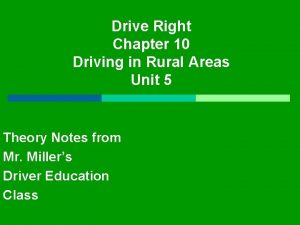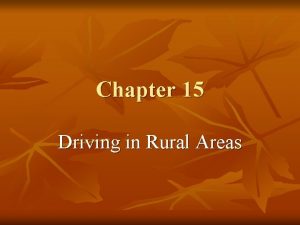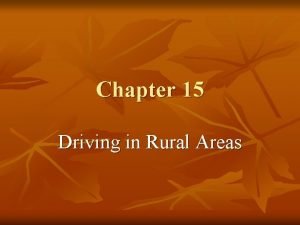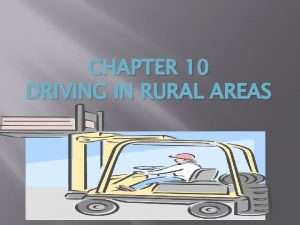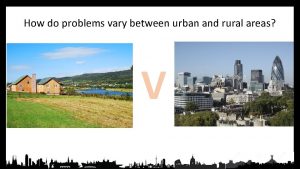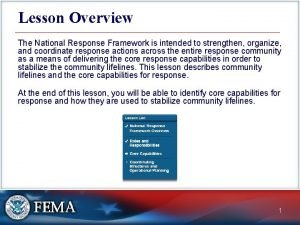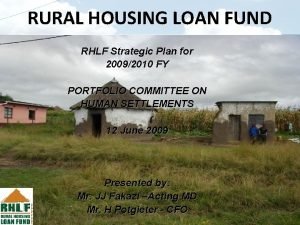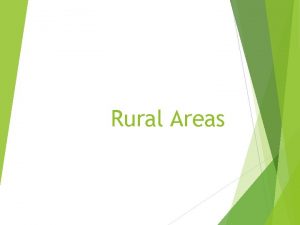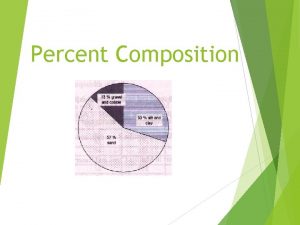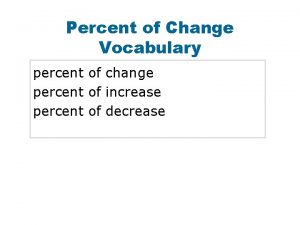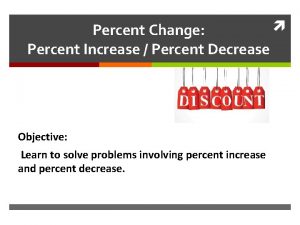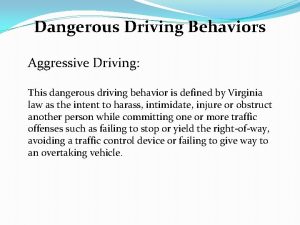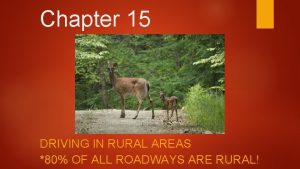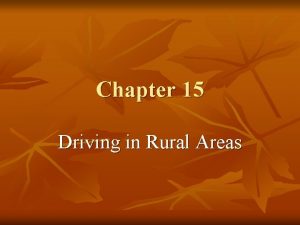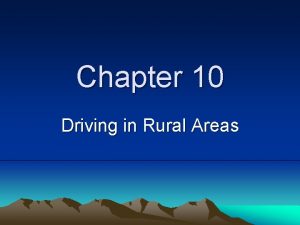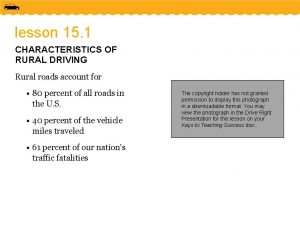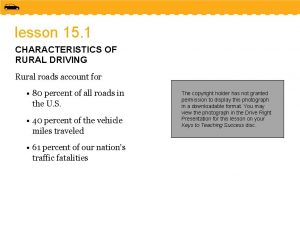Driving in Rural Areas 82 percent of all























- Slides: 23

Driving in Rural Areas 82 percent of all miles of roadways are rural roads.

Different types of Roads • Do you drive the same way on all of these roads? • Made up of – brick, Asphalt, concrete, Gravel, crushed stone, dirt

Rural Areas • Wide open spaces, less traffic • Collisions – 2 x’s as many highway deaths than in urban areas • Biggest mistake people make – – Assume that conflicts will not occur

Safe Speeds • Speed affects – Your line of sight – Your stopping distance – Your vehicle control – Amount of damage & injury in a collision What is the Basic Speed Law? What is the speed limit in the country?

Driving into curves • Warning signs • When do you slow down for a curve in the road?

Driving on Hills • What happens to your Sight Distance? • How does gravity affect your driving?

Mountain Driving • Trucks can have bad brakes and be unable to stop going down a steep road.

Runaway Truck ramp

Divided Roads always have lanes of traffic moving in opposite directions separated in some way.

Divided Highway

Divided Roadways


Passing on Rural Roads • What 3 questions should you ask yourself? -is it legal? -is it safe? - is it worth it? 3 stages -decide to pass -prepare to pass -execute (10 -15 sec)

Passing on 2 lane roads • How fast should you go to pass another vehicle? • Can you go above the speed limit? • Can you pass more than 1 car at a time? • What can you do to help others pass you?

No Passing Situations No passing on hills -- 700 ft-1000 ft No passing at intersections – w/in 100 ft No passing at railroad tracks w/in 100 ft Oncoming traffic – too close or too narrow of road

No Passing


Remember • You should not pass if you cannot complete the pass before the no-passing zone begins. • When meeting an oncoming car at night, you might avoid being momentarily blinded if you glance at the right edge of the road.

Other Rural Situations


Watch out for Deer!!

• Heat on the car • Heat effects on the driver • Sand Storms • Flash Floods

Driving in a Sand Storm
 Drive right chapter 10
Drive right chapter 10 Chapter 15 driving in rural areas
Chapter 15 driving in rural areas Rural areas have of development drivers ed
Rural areas have of development drivers ed Traffic controls help you to travel safely by *
Traffic controls help you to travel safely by * Difference between urban and rural
Difference between urban and rural Usda rural areas in massachusetts
Usda rural areas in massachusetts Valid percent and cumulative percent
Valid percent and cumulative percent Name 3 points
Name 3 points About 41 percent of all fish species inhabit
About 41 percent of all fish species inhabit In 1929 the top 5 percent of all american households
In 1929 the top 5 percent of all american households Sign sign everywhere a sign
Sign sign everywhere a sign 8 areas of knowledge
8 areas of knowledge Stabilizing community lifelines is a primary effort during
Stabilizing community lifelines is a primary effort during Sig rural
Sig rural Segmentation of rural market
Segmentation of rural market Importance of rural journalism
Importance of rural journalism Rhlf
Rhlf Rural heritage
Rural heritage Function of rrb
Function of rrb Mais familiar y comunitario
Mais familiar y comunitario Organisational structure of rrb
Organisational structure of rrb Rural e urbano
Rural e urbano Proyecto agua potable rural
Proyecto agua potable rural Single family housing section 504 repair pilot program
Single family housing section 504 repair pilot program
